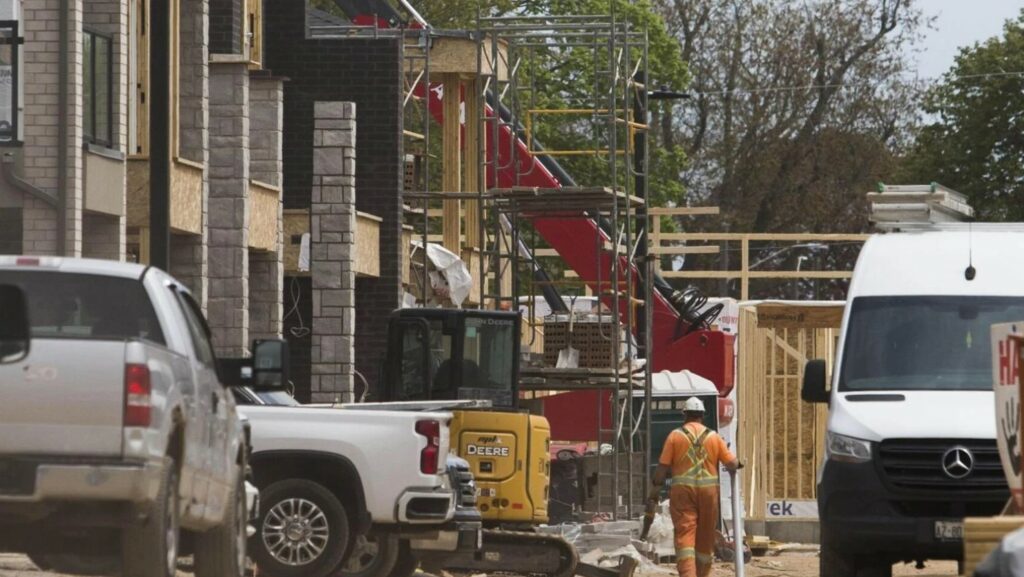Niagara’s economy will defy expectations and could outperform the province and the nation over the next two years, says Niagara Region’s manager of economic research and analysis.
During a recent meeting of the municipality’s planning and economic development committee, Blake Landry told regional councillors that while Niagara’s gross domestic product (GDP), the total value of all goods and services produced in an economy, grew minimally at 0.4 per cent over the past year, he anticipates it will improve by 2.4 per cent from the second quarter of 2024 to the same period in 2025.
Landry said Bank of Canada’s policy of interest rate increases — from a low of 0.25 per cent to five per cent since July 2023 — reduced inflation but had a ripple effect on the entire economy and its macroeconomic indicators, including lower GDP growth, employment, retail sales, income growth and investment in certain classes.
“We can expect to see, hopefully, a decline in the policy rate as soon as July and possibly September, based on what economists have been saying,” Landry said. “The easing of these economic challenges will be gradual, but Niagara is predicted to outperform both Ontario and Canada.”
Landry said improved national economic conditions are also expected to continue through 2024 and 2025, with the Bank of Canada’s Business Outlook Survey reporting improving business and consumer confidence.
Port Colborne Coun. Fred Davies said indicators, such as bond yields, suggest the country is headed in the opposite direction and into a “fairly substantial” recession or economic correction.
“We’re at a point where our national debt and household debt is actually greater than the money supply in the economy,” Davies said. “Some of these numbers historically suggest that we may see a continued productivity decline, which then impacts the standard of living and wages and, ultimately, brings on a recession.”
Landry said any macroeconomic condition impacts Niagara, but the region is still showing strong levels of investment.
“I presented at the GNCC (Greater Niagara Chamber of Commerce) last week, and we talked a lot about business confidence, which is four out of five right now,” Landry said.
“The confidence is there, and I think that has a lot to do with whether or not businesses decide to invest.”
Landry said his focus is on lower interest rates, which will improve business confidence, generate investment and create jobs.
“We can’t worry too much about monetary policy in this context because we have no impact over any of that,” Landry said. “That being said, yes, challenges are on the horizon, but the economists I follow also think we will be in a much better position within a year.”
Gross domestic product
Niagara’s GDP growth stagnated from 2023 to 2024 due to interest rates. However, real GDP growth is projected to resume, with an expected rate of 2.4 per cent over the next year.
Niagara’s GDP per capita (GDP divided by the total population), often used as a measure of overall economic productivity, was $38,678 in the second quarter of 2024, compared to $53,421 for Ontario. Historically, Niagara’s indicator has lagged behind the province’s, but over the past two years, Niagara’s performance has improved. It is expected to grow by 1.4 per cent, outpacing the province’s growth rate of 0.4 per cent.
Salaries and wages
Historically, Niagara has also trailed behind Ontario in terms of salaries and wages. At the end of 2023, per capita GDP, total salaries and wages divided by the working population amounted to $60,210 for a 5.8 per cent increase, compared to $67,077 in the province, which had a 4.8 per cent growth rate.
Income
In the second quarter of 2024, Niagara’s household disposable income per capita was $37,289, slightly lower than Ontario’s $39,091 and predicted to rebound by 1.8 per cent over the next year. Ontario’s projected growth for this indicator is 1.3 per cent.
Housing prices
Landry’s report said housing prices remain dynamic amid evolving economic conditions. As of February, the benchmark housing price in Niagara was $619,000, notably lower than Ontario’s at $868,000. The price represents a decrease of 23 per cent from a peak of $802,500 for Niagara. The provincial decline is 17 per cent from a peak of $1,045,000 in April 2022.
Retail sales
Retail sales have shown slow signs of recovery, with a modest growth rate of 3.2 per cent predicted in the coming year after sales values experienced a significant decline of 8.4 per cent to $7.9 billion in 2022’s third quarter. The decline coincided with an increase in interest rates that reduced discretionary income.
Investment in building construction
Investment in residential building construction decreased by 22 per cent to $268.9 million by the end of 2023, the lowest point since the third quarter of 2018.
Investment in non-residential building construction remained mainly consistent, ranging from a high of $30.9 million in 2022 to a low of $25.3 million in the second quarter of 2023. Commercial building construction experienced a steep decrease from the pandemic but stabilized at $37.5 million in the final quarter of 2023. Institutional building construction decreased steadily from $66.1 million in the first quarter of 2022 to $37.6 million in the fourth quarter of 2023. However, the indicator will rebound with the construction of the south Niagara hospital in Niagara Falls.
Labour
Niagara’s unemployment rate reached a historical low of 4.2 per cent at the beginning of 2021, compared to Ontario’s rate of 5.3 per cent. However, due to the impacts of higher interest rates and inflation on the economic environment, Niagara’s unemployment rate increased to 7.3 per cent, while Ontario’s rose to 6.3 per cent.
Niagara’s participation rate has faltered since the pandemic, from a relatively high 64.6 per cent in the second quarter of 2022 to 60.4 per cent in the first quarter of 2024. Comparatively, Ontario’s rate was 65 per cent.

